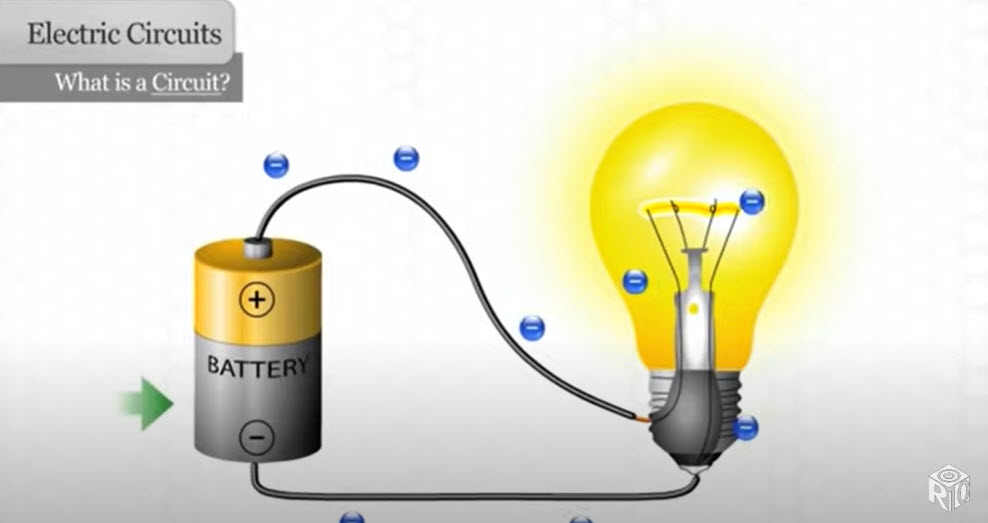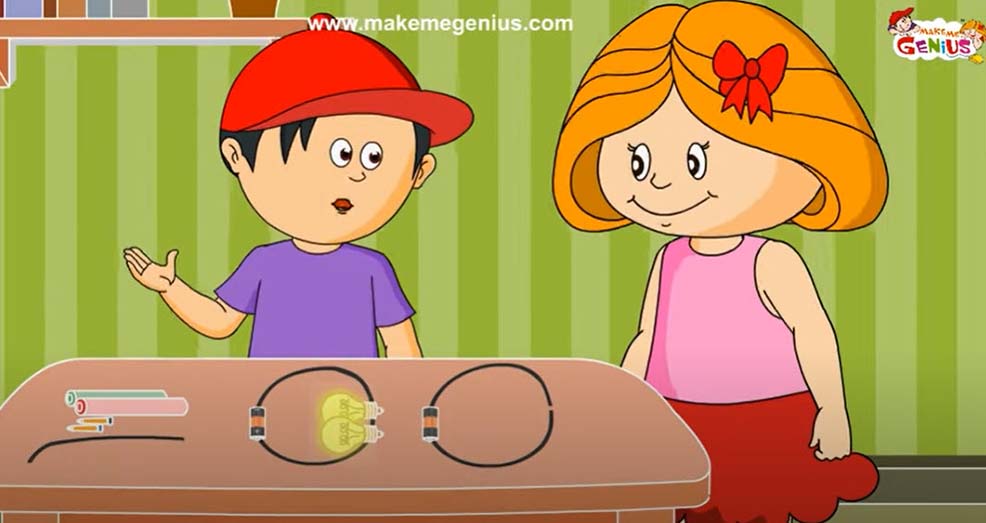Standards
Science – SC.4.P.10.1
Observe and describe some basic forms of energy, including light, heat, sound, electrical, and the energy of motion.
Big Idea(s)
Forms of Energy
- Energy is involved in all physical processes and is a unifying concept in many areas of science.
- Energy exists in many forms and has the ability to do work or cause a change.
Essential Question
- How does energy have the ability to work or cause change?
Vocabulary
Energy • Potential Energy • Circuit • Positive Charge • Negative Charge • Reaction • Electrons • Current • Electricity • Simple Circuit • Battery • Complete Circuit • Incomplete Circuit
Background Information
An electrical circuit helps a continuous flow of electrons to go through a uniformed direction through a set of wires. This flow of energy/electrons occurs in a never-ending closed loop made up of conductive materials.
The battery is the major component of an electrical circuit which acts as the power source to light up the bulb. It provides the energy which then helps the electrons to flow.
Guiding Questions
- What is energy?
- How do we harness energy?
- What is potential energy?
Instructional Sequence
Science Lab:
Problem Statement:
- How can you make a light bulb turn on using only the materials provided in this inquiry lab?
Fun Facts
Did you know that…..
- The amount of flowing electric charge in one second is called a current.
- Electricity travels at the speed of light – more than 186,000 miles per second!
- A spark of static electricity can measure up to three thousand (3,000) volts.
- A bolt of lightning can measure up to three million (3,000,000) volts – and it lasts less than one second!
- Electricity always tries to find the easiest path to the ground.
- Electricity can be made from wind, water, the sun and even animal manure.
- One power plant can produce enough electricity for one million homes.
- The first power plant – owned by Thomas Edison – opened in New York City in 1882.
- Thomas Edison didn’t invent the first light bulb – but he did invent one that stayed lit for more than a few seconds.
- Thomas Edison invented more than 2,000 new products, including almost everything needed for us to use electricity in our homes: switches, fuses, sockets and meters.
- Benjamin Franklin didn’t discover electricity – but he did prove that lightning is a form of electrical energy.
Inquiry Type
- Structured Inquiry
- Brain Storm
- Guided Inquiry Class/Group Activity
Teacher Resources


